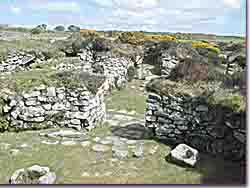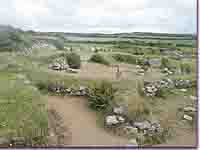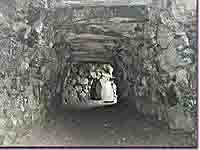|
|
West Penwith contains several types of ancient settlements.
These rang from hill forts, such as Chûn Castle, through to
the remains of many hut settlements, and to the Iron Age courtyard
settlements of Carn Euny and Chysauster - at Bodifry there is a
Bronze Age village predating these. Inhabitants of these settlements
would mostly have been smallholders, raising food crops and livestock,
and there is evidence of very early stone field enclosures throughout
the area.
In some areas the inhabitants were involved in tin,
copper and gold mining, and traded by land and sea with Mediterranean
territories, and as far north as the Orkneys and Shetlands.
There are also several hut circles and village remains
in the north of West Penwith, dating back to around 4,500BC, which
were abandoned around 1000BC probably due to climatic changes affecting
crop yields.
|
Chysauster
SW473350
Chysauster is a Romano-British settlement, dating from around
100BC to between 200 and 300AD. Built by the Celtic Dumnonii
tribe, it consists of nine complex oval courtyard houses,
and the remains of other buildings.
Interesting features include a collapsed fogou, a stone quern
(for grinding grain), covered drainage, and open hearths.
Around the houses there are signs of terraced gardens.
|

|
|


|
Carn
Euny
SW402288
The courtyard settlement of Carn Euny was built around 200
BC, though there is evidence of habitation as far back as
Neolithic times.
It consists of the remains of the stone walled courtyard
houses , and a magnificently preserved fogou (underground
cave) about 20 metres long, with a circular roofed chamber
leading off it, which you can enter.
Fogous are fairly common in Cornwall, and are thought to
have been used for cold food storage by village communities.
|
TOP
|
